Haters rejoice, it’s an e-bike from a motorcycle company! Complete with removable plastics that emulate radiator shrouds, the GasGas MXC 5 makes no apologies for neither what it is nor its likely target audience. The icing on the cake is the DVO suspension powered by WP, making the MXC 5 fully moto. With a price tag only a few hundred dollars less than the GasGas MC 250F motorcycle, is this new eMTB ready to take on the competition? Almost.
Photos by gordo
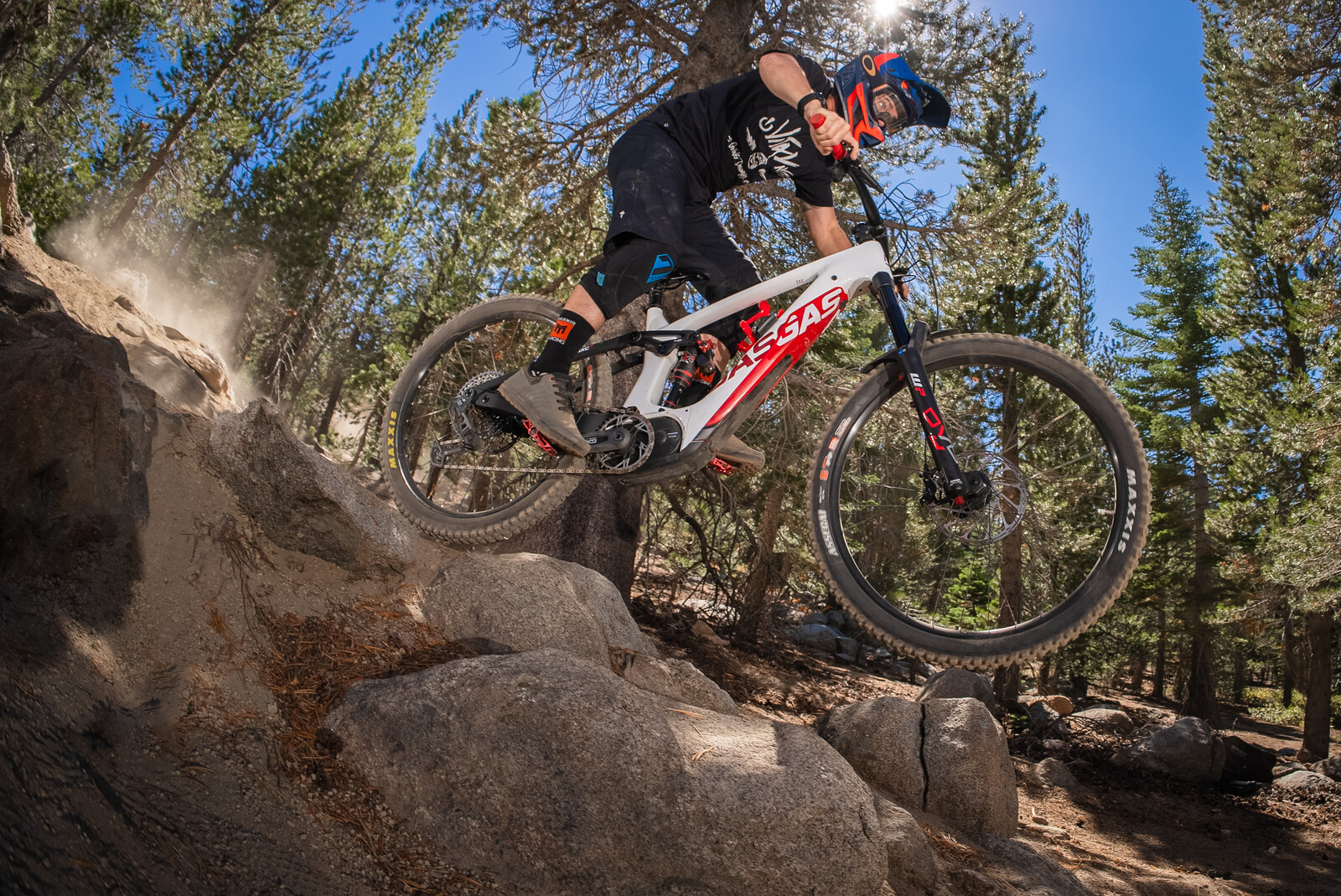
Highlights
- Carbon fiber frame
- Mixed-wheel 29/27.5-inch
- 140mm (5.5 -inches) of rear wheel travel // 160-mm (6.2 -inches) fork travel
- Four-bar suspension design
- 64.5-degree head angle
- 74-degree effective seat tube angle
- No geometry adjustments
- Internal cable routing
- Boost 148 rear hub spacing
- DVO Onyx D1CV SL fork
- DVO Topaz Air CV shock
- SRAM PowerTrain motor
- Rally/Range power modes
- 90Nm torque
- 630wh battery
- Battery is accessible via door on downtube
- Sizes: S/M, M/L, L/XL
- Measured weight (size S/M w/ Time pedals): 53.7 pounds (24.3 kg)
- MSRP: $8.999 USD

Strengths
| Weaknesses
|
Overview
GasGas came to the table with something quite different in their MXC line of electric mountain bikes. Ignoring the polarizing looks and use of wannabe moto plastics, GasGas is offering unique geometry and new suspension in a package that could appeal to both the moto-crossover and eMTB crowds.
Each MXC bike uses the same carbon frame and is powered by the new(er) SRAM Powertrain. Frame sizes are S/M, M/L, and L/XL and truly, by the numbers, that sizing method makes sense as each of these sizes does split the norm. There are three models of MXC (4, 5, 6) and the top two utilize the new DVO/WP suspension. Our test model, the MXC 5 has an Onyx D1CV SL fork and Topaz Air CV shock. CV means Cone Valve, the contribution coming from WP, the same brand supplying GasGas’s moto suspension.
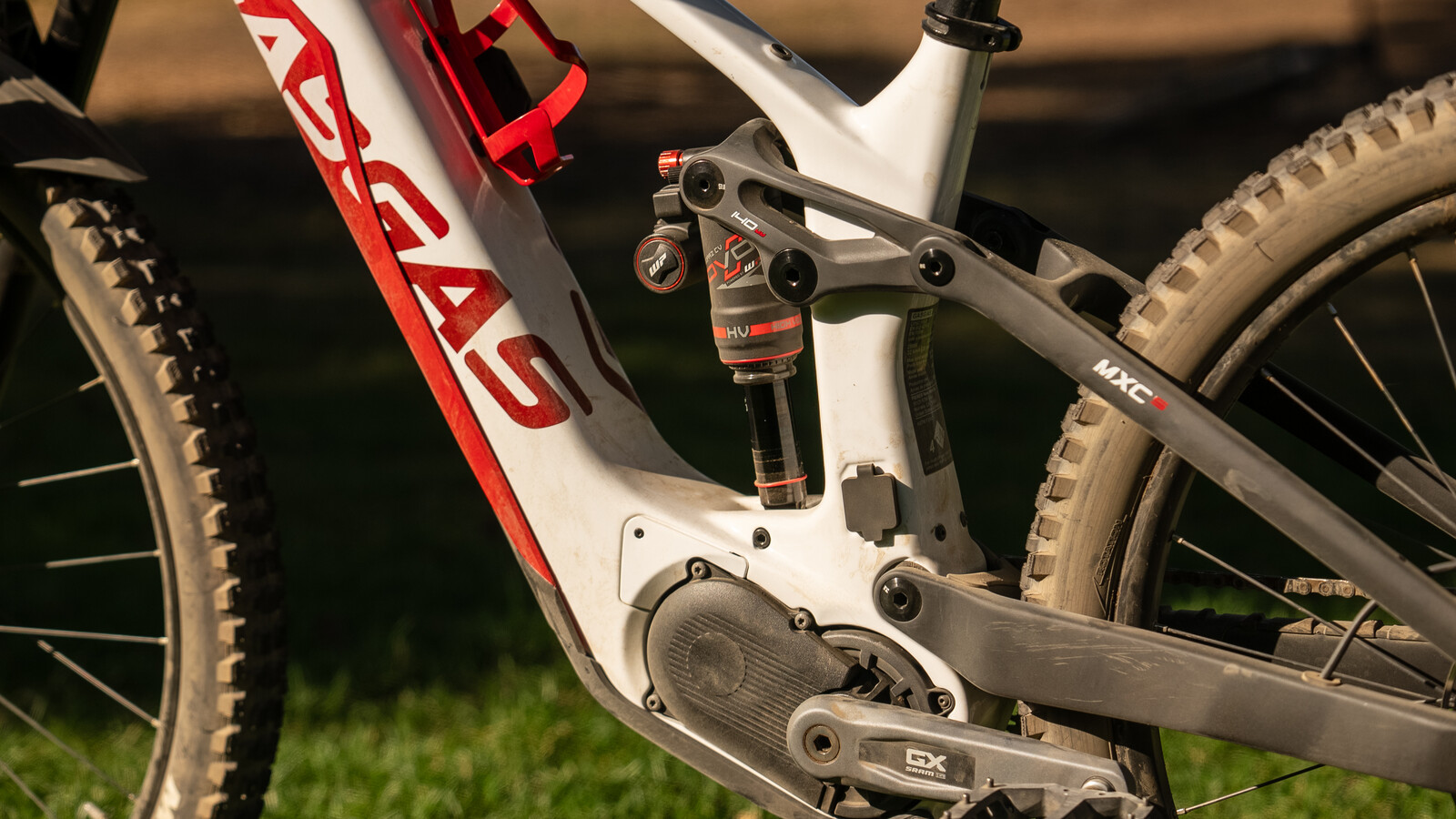
Our test bike had a SRAM GX Transmision drivetrain that was hard-lined into the bike’s battery. There were two shift pods; the right for the rear derailleur and the left to change the motor modes. While the MXC 5 does have 220mm rotors, they are the Centerline, not SRAM’s best offering. Feebly clamping to those rotors were SRAM G2 brakes. GasGas supplies the wheels, dropper, bar, stem, and grips. Our mixed-wheel bike had a Maxxis Assegai MaxxGrip EXO+ 29x2.5 front tire and a DHRII EXO+ 27.5x2.4 rear tire.
Frame Details
The GasGas frame has some of the cleaner lines on the market. It is low-slung and simple but elegant. Beyond the additional plastic protection on the front triangle, there’s plenty of rubber protection around the drivetrain, keeping things quiet and free of chipping. The SRAM motor is wrapped within the frame, with a number of small, removable doors to cover it up and maintain the design of the bike.

The brake, dropper, and derailleur (MXC 4) lines are run internally while our bike had the wire running from the motor to the derailleur through the chainstay. Integrated into the top tube is the SRAM Powertrain display which shows your mode, auto-shift function, and battery life. There are two buttons, one to turn it off/on and one to swap modes. Combined with the bar-mounted pod, riders have options for tuning how their drivetrain functions. However, the easiest way to set up the bike is via the SRAM AXS app.
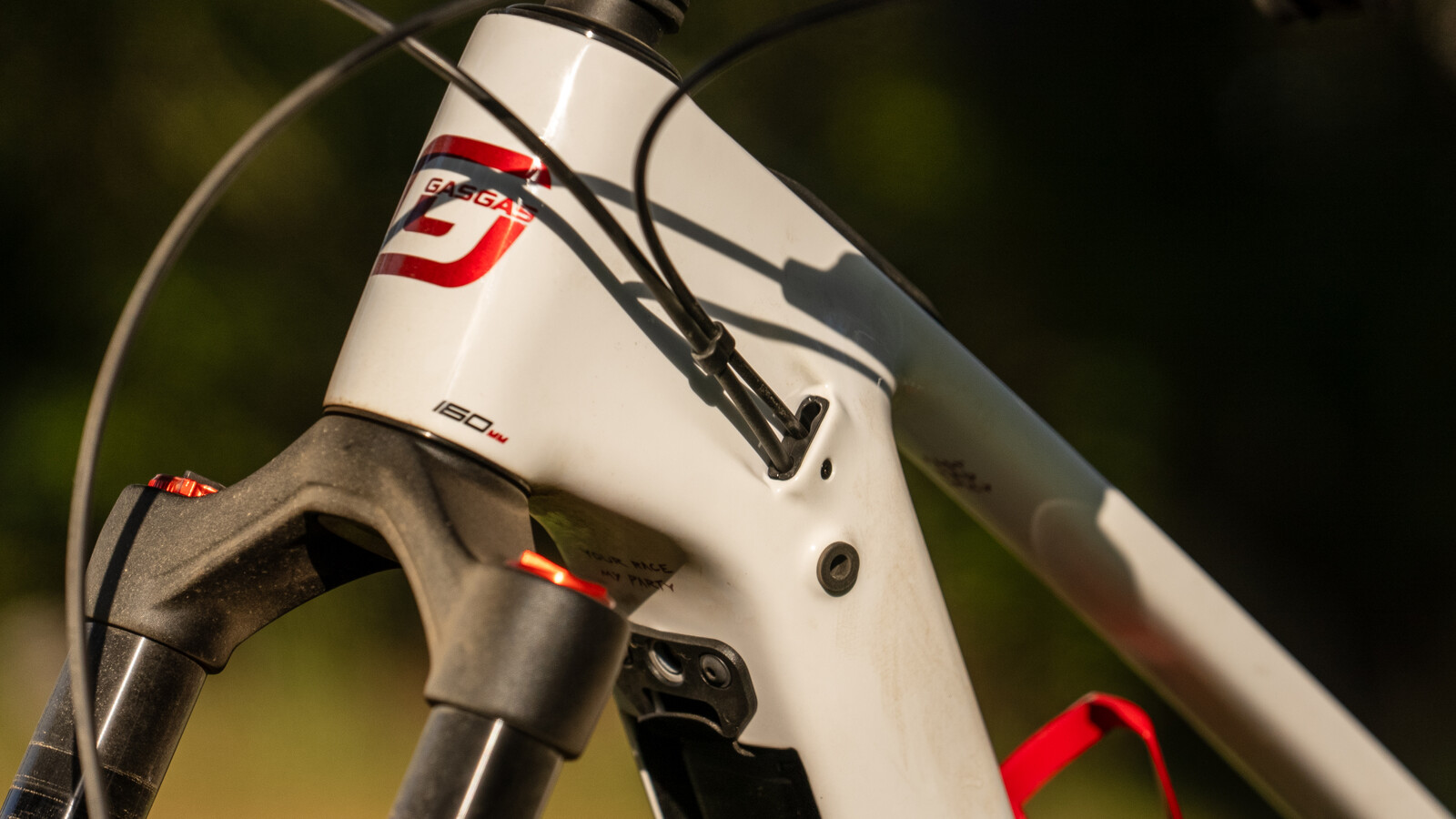
Our five-year-old thought the clip-on plastics were cool and they do come pre-mounted to the bike. Removing them is very easy, just pull and they pop right off. The plastics are held to the frame via rubber grommets and do in fact press into the frame. We were not supplied with, nor are we aware of, any means to plug the hole left by removing the plastics. There is not a hole directly into the frame, just a deep recess easily filled with mud and debris. There’s also the frame detail stating “I’m Naked!” now exposed. So funny.
eMTBs - Battery / Motor Platform
GasGas went with the SRAM Powertrain for all of its MXC bikes. This system came out last year and has been making its way onto more bikes for good reason. The system is much quieter than the competition, both when pedaling and when going downhill. Delivering 90 Nm of torque and paired to a 630Wh battery, our GasGas had excellent range and plenty of juice on tap.

We started off using the Auto Shift function and went through a few weeks of testing different shift timings. Regardless of our setup, the Auto Shift was never hitting the right timing. We loved it for pizza shop runs but in real-world settings, it was much too slow for our liking. Our two cents is that the world of automatic shifting is fantastic for urban usage but has a long way to go for off-road. Perhaps SRAM is a victim of its own success, manually tapping AXS buttons is simple, fast, and accurate. The robots aren’t faster than our well-trained thumbs. (Up, down, up down, left, right, left, right, B, A, B, A, Select, Start)
The Powertrain system has two modes - Range and Rally. In a time when other brands are offering five modes and micro adjustments, SRAM decided to zag. Much of our testing had the bike in the Range mode, which was akin to the Trail/eMTB/middle setting of other offerings. With an eMTB over 50 pounds, we’re not terribly eager to try an “Eco” type setting and per its name, Range delivered the goods. For every 10% of battery, we got about 1,000 feet of vert. Don’t take that as hard science but it seemed to hold for our testing.
Bumping the bike to Rally mode created a sensation of riding a chairlift. We dominated a horrible 1,000-foot wall in no time with a heart rate still in the warm-up zone. This came at a cost of about 20% battery, so our range was cut about in half.
Suspension Design
GasGas was wise to not stray far from the herd with its suspension design. They utilized a regular, four-bar Horst design. Going with a tried-and-true design here allowed them to make their own special sauce with the actual suspension bits and geometry.
While bike brands are a dime a dozen these days and new players are flying on the scene like CGI extras in the Matrix, the suspension world is a bit more locked down. DVO is by no means an outsider and has been supplying OE squishy bits for some time. The collaboration with WP, however, is new and sexy.

The suspension uses what WP calls “Cone Valve” technology and is essentially the guts of the suspension housed in a DVO chassis. Per GasGas, the Cone Valve acts as a blow-off valve during hard impacts. This is supposed to create a platform that rides higher in the travel but is still reactive to impacts. Spoiler alert - it’s darn good.
Geometry
Stack is the new reach, amiright? For years, riders have been shouting for longer reach (with lower seat tubes, slacker head angles, and steeper seat angles) but nowadays, we all want a taller front end. Other than an ill-advised period in 2010-2012 when DH racers had flat bars, the MTB crowd has been routinely slapping 35-50mm riser bars on their bikes. We know because we do it, too.
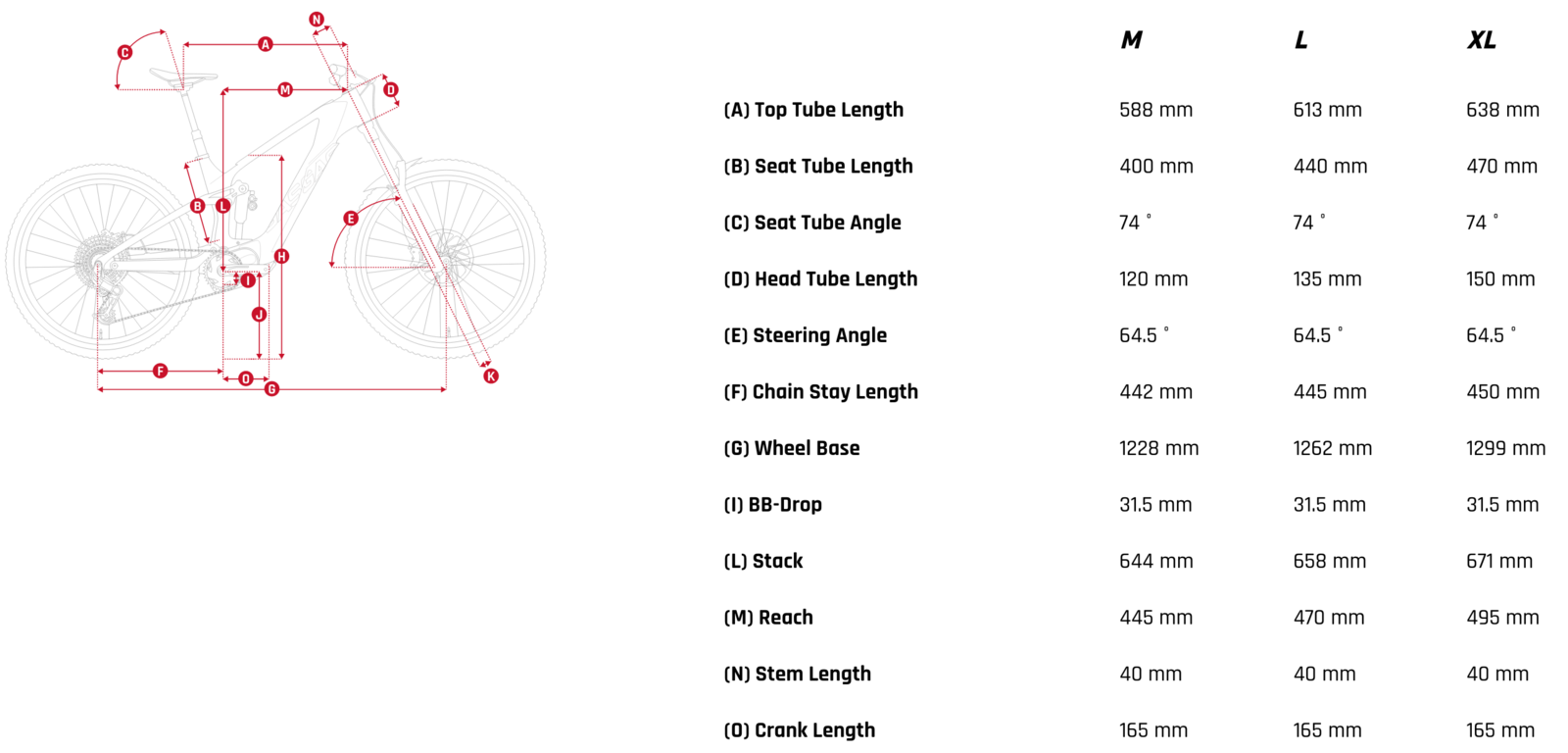
If you’ve ever ridden a dirt bike then the GasGas front end should feel like home. Nice and tall. Do we like it? Yes. Do we love it? Probably, but we’re afraid of commitment right now, BRB. We will say this, with a 644mm stack, the MXC 5 was the first bike we can recall not wanting to bin the stock bars for some taller ones.
GasGas’s size chart reads more like a helmet sizing chart but at least they own it. Our preferred reach on a size medium is around 450mm. Anything more than 460mm and we get lost in the enormity of the front end. When staring down the barrel of choosing between 445mm (S/M) and 470mm (M/L), we opted for the smaller. With a 442mm chainstay, we figured the MXC would be long enough already and did not need to wander into large territory. GasGas does use size-specific chainstay lengths, so going to an M/L would have seen a 34mm growth in wheelbase. In the end, we made the right call for our riding style.
Build Kits
GasGas has a full catalog of e-bikes with the MXC line filling their All Mountain range. Starting at $6,999, the MXC 4 comes with a RockShox Lyrik Select+ and RockShox Deluxe Select+ rear shock. The drivetrain uses the mechanical GX/SX Eagle system with SRAM DB8 brakes. As with our test model, the wheels and cockpit are all house-brand.
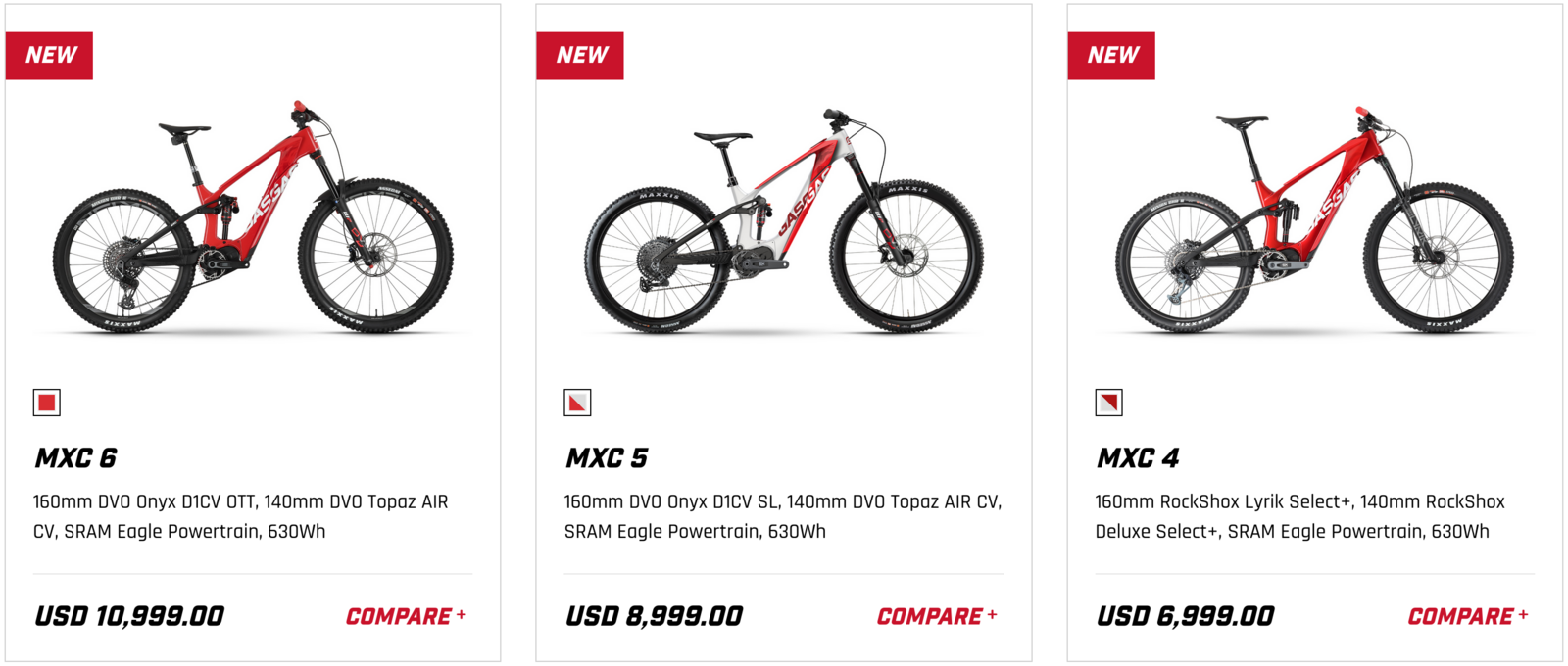
Above our build is the MXC 6 at $10,999. For the extra moolah, riders get a bump to the DVO Onyx D1CV OTT fork (more adjustment). The SRAM drivetrain moves to X0 Transmission and the brakes get a much-needed bump to Code RSC but stick with Centerline rotors. While the seatpost gets the AXS treatment, the rest of the finishing parts are a blend of Newman and house brand.
On The Trail
Trails Ridden
The GasGas MXC 5 was tested on the same trails and under the same conditions as the Devinci e-Troy Lite. The Sierras provide a lovely blend of parched to fully dusted conditions covering a fine selection of rocks, boulders, and pebbles. From big rides to laps at the trail center, we put the GasGas into a variety of scenarios that may match its intended use.
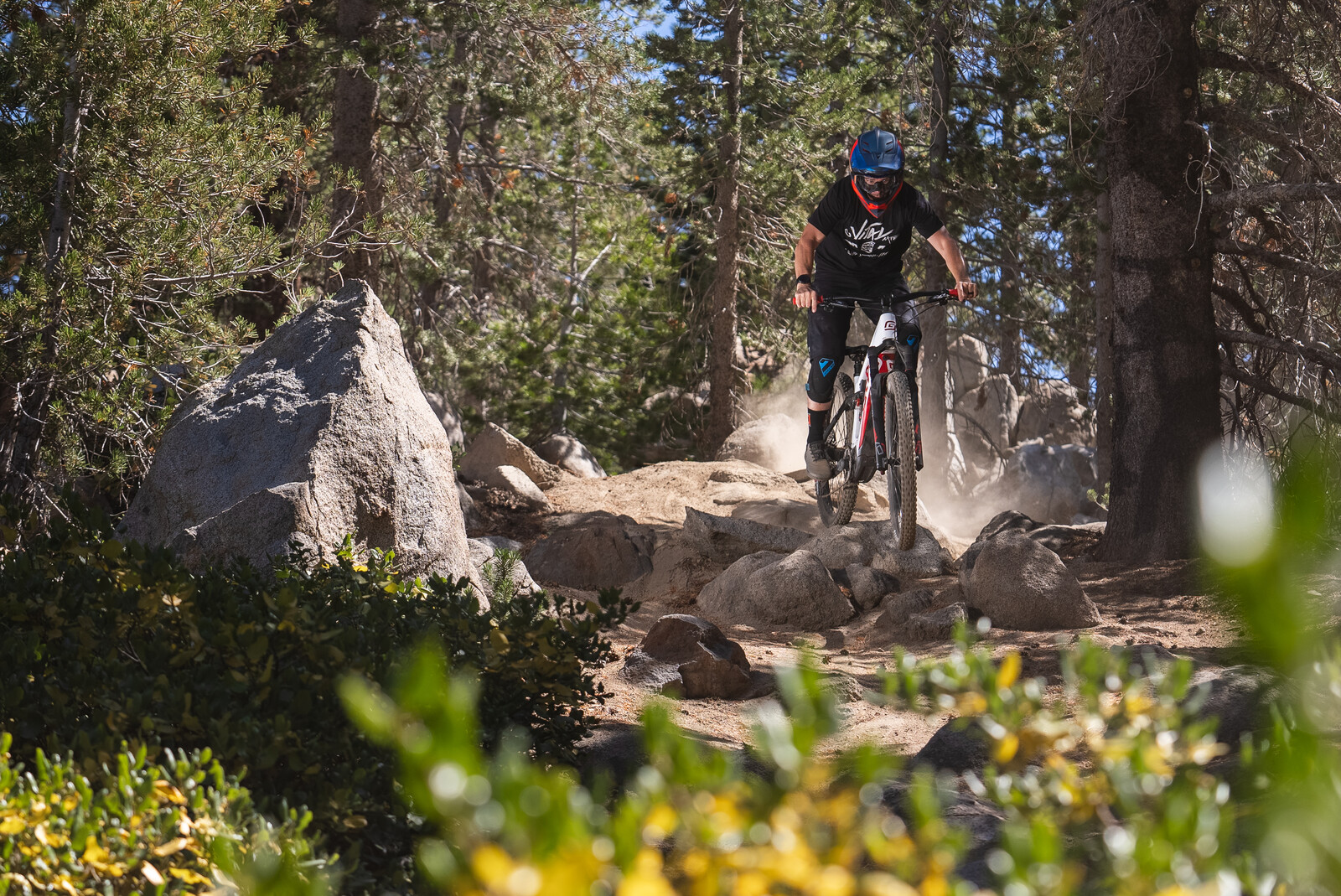
Setup
Our test bike did not come with an owner’s manual or setup guide. Digging around the internet landed us on GasGas’s setup video, which was handy. Minus some actual baseline pressures to put into our shocks, we were mostly-ish ready to go. Good thing we’re pros. Our testing resulted in 90 PSI in the fork with 7 of 14 clicks of low-speed compression and 14 of 28(!) clicks of high-speed compression. We had 180psi in the rear shock with 5 of 6 clicks of high-speed compression and 10 of 18 clicks of low-speed compression. Click counts are from fully closed.
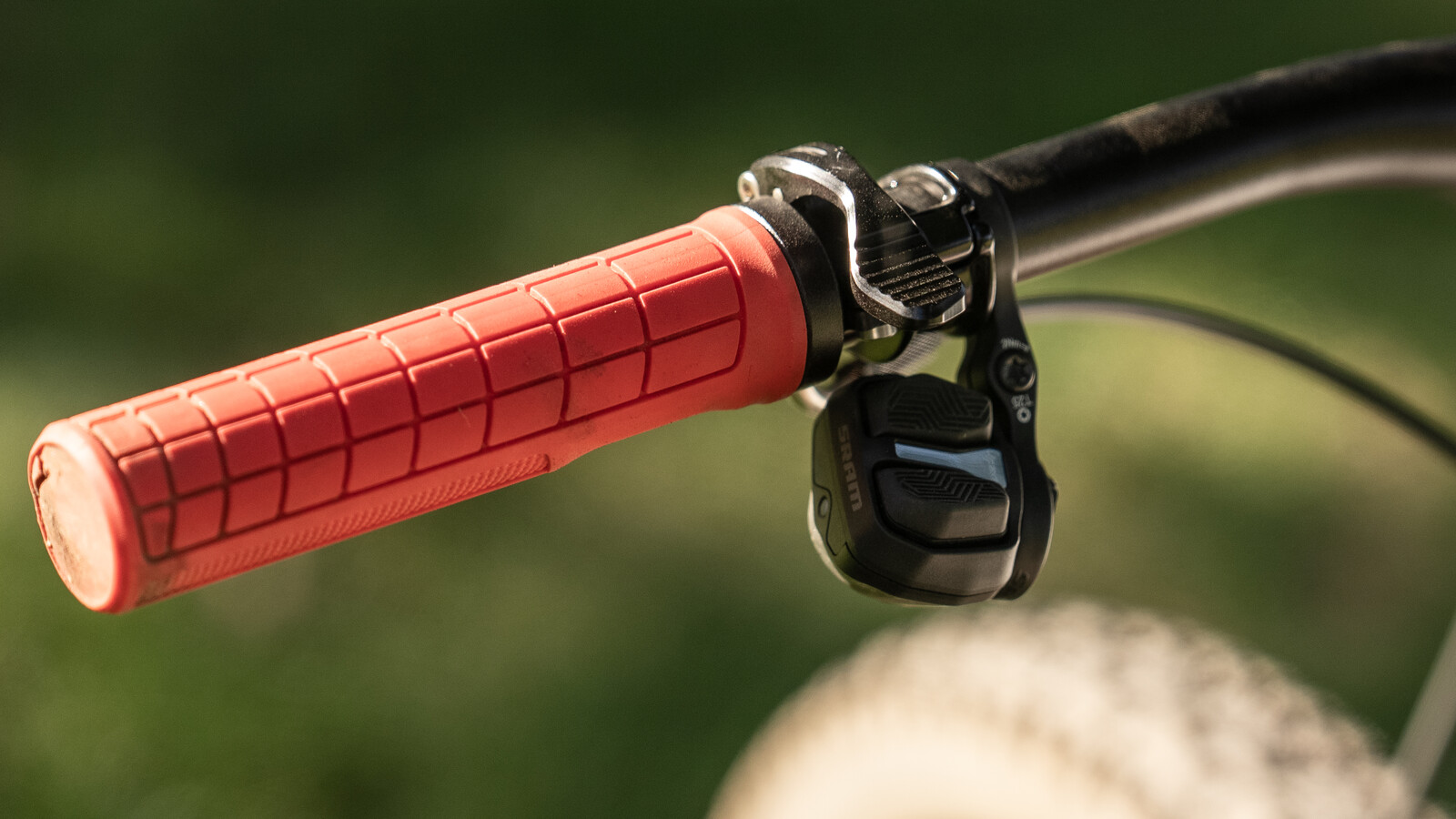
...who in their right mind puts a 125mm dropper post on an adult bike? Even though we're on the S/M size, we would expect (and could live with) a 150mm dropper, though we generally prefer 170mm.
Setting the proper seat height was “interesting,” as there was limited cable between the dropper lever and the seatpost. We had to run the dropper lever to the inside of our components to get enough slack to raise the seat to the proper height, otherwise the seat would come up if we turned the bars too much. To that point, who in their right mind puts a 125mm dropper post on an adult bike? Even though we're on the S/M size, we would expect (and could live with) a 150mm dropper, though we generally prefer 170mm. Yes, once upon a time there were no droppers but you know what? That was 15 years ago. We had to manually raise and lower our post at the bottom/top of each climb to unlock the MXC’s riding potential. We have no clue if larger sizes come with longer droppers. That information is not on the GasGas website.
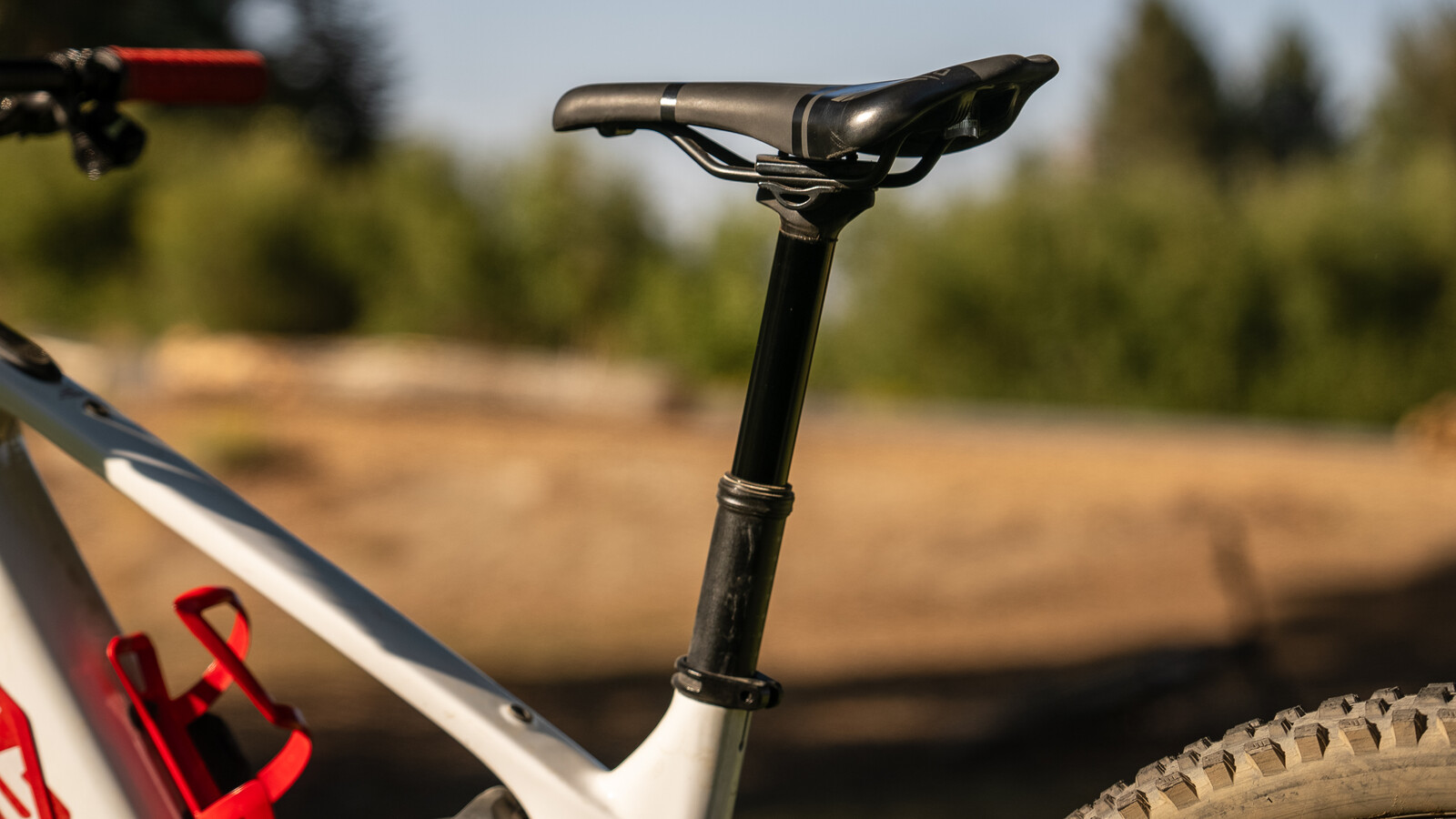
The GasGas comes with inner tubes installed, though it is listed as tubeless ready. We test a lot of bikes and the MXC is the first one in years to come with tubes. We rolled the dice and at the end of our first ride, rather, ending our first ride, we flatted. Now you know, don’t gamble. Setting up the MXC tubeless was a non-event. The rim tape did have us raise an eyebrow but we went for it anyway. Our wheels did hold a seal for the most part but by the end of testing, we did have sealant making its way through the nipple holes.

Descending Performance
Full-sized e-bikes have a way of creating a magic carpet experience. Certainly, their heft is to credit for this. To that point, the GasGas MXC is no exception, it obliterates the downhills and offers reassurance in the fastest, burliest situations. Until you hit the brakes. Then it all goes out the window.
Let’s get this out there now and then we can delve into all other elements of the MXC through the caveat of the brakes being horrid. There is not anything wrong, per se, with the G2 brakes. They have their place. That place, however, is not on an aggressive, full-sized e-bike. GasGas seemed to want to use a workaround of putting 220mm rotors on the bike. This patch did not work. SRAM’s G2 brake simply cannot put down the power to slow this bike. The Centerline rotors protested when asked to do their part and the result was an increase in arm fatigue and a reduction in confidence. Had GasGas at least gone for Code R brakes, things would have been better. We don’t know who had the sign-off on this one but we can’t imagine they ride mountain bikes. The brakes limited where the bike felt comfortable and overshadowed the whole review.
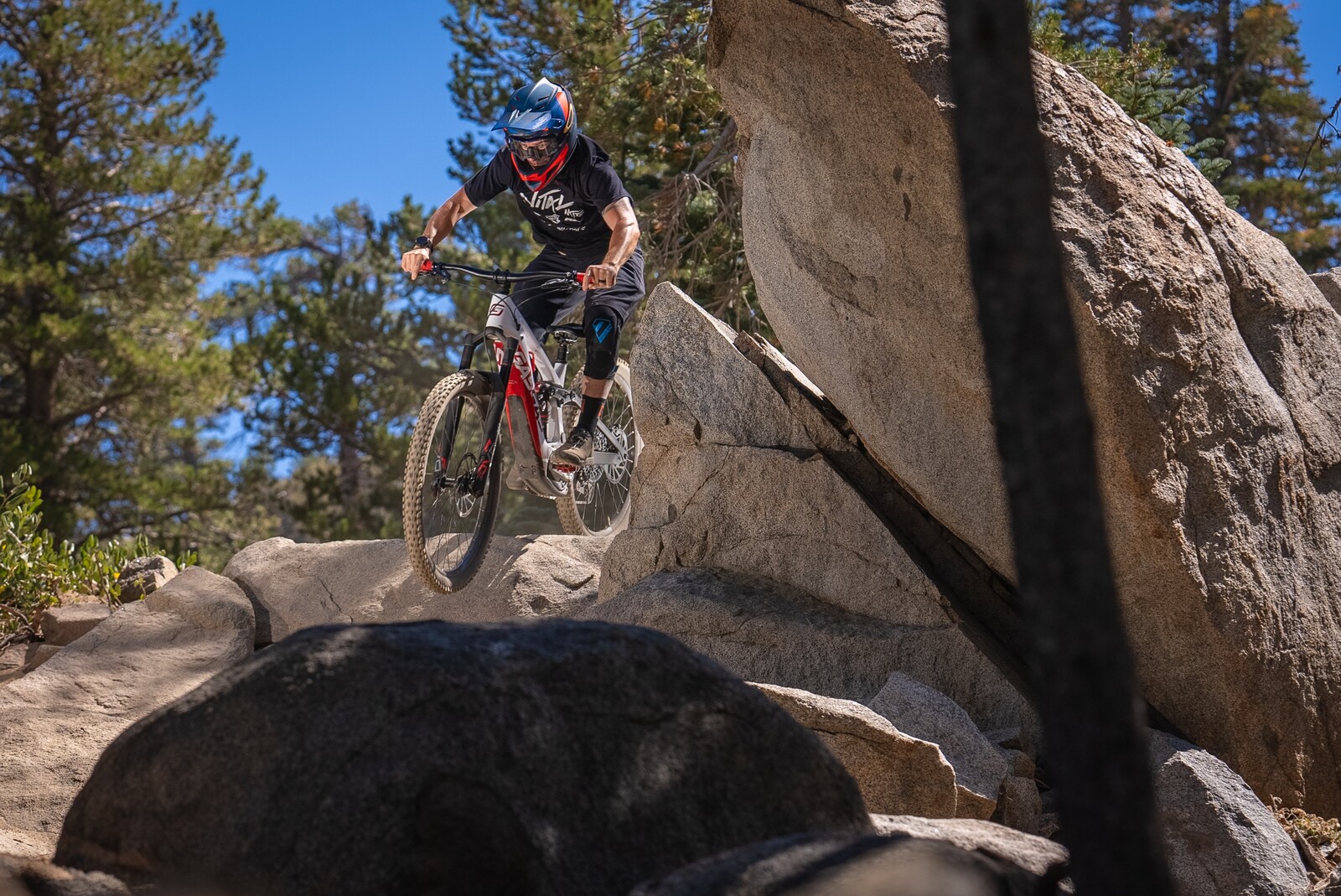
A bike this big with shorter travel should not feel so bottomless but the GasGas does. We have to credit the DVO/WP suspension here.
Between the taller front end and the balanced weight of the geometry, cornering the MXC was a dream. Throwing the front end into corners had the bike hooking up and railing arcs that we didn’t think possible in our dry conditions. We even felt inspired to throw it back to our own moto days and stay seated, foot out, through larger berms. The MXC is an absolute blast to ride.
A bike this big with shorter travel should not feel so bottomless but the GasGas does. We have to credit the DVO/WP suspension here. From the small trail vibrations to large, square hits, the suspension seemed dialed wherever we went. Riding smoother, more jump-oriented lines had us turn up the compression a couple of clicks to get a bit more pop out of the large bike. We did get a little bit of noise from the rear shock but otherwise, we had no feedback from the suspension. This bolstered control from the suspension allowed for the GasGas to really carry its speed and attack chunkier parts of the trail with more gusto.
Overall, we enjoyed the MXC most at trail centers or in areas where we would pull laps. Other than having to constantly adjust the seatpost, we found the party lap approach to best suit the bike’s nature. Throw out a foot, charge harder than you should, blow it all out, and then recover on the way back up.
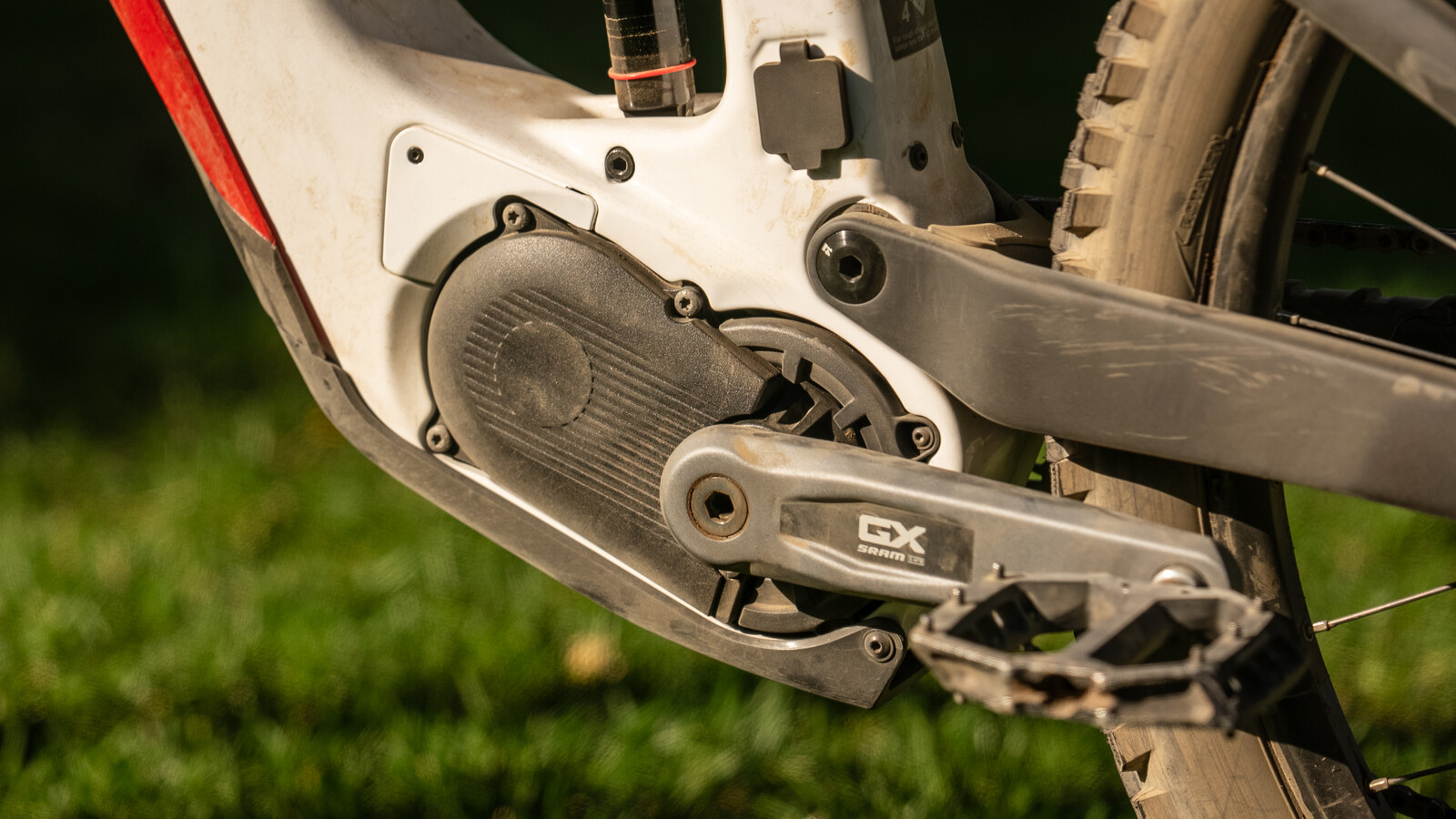
Climbing Performance
Yes, we just said recover on the climbs; it’s a full-power e-bike. Even in Range mode, the SRAM Powertrain puts down plenty of juice. We found the climbing position of the MXC to be very comfortable. It was natural to just relax our hands and spin it out up the hill when the terrain provided. We did notice a little bit of wheel flop and the bike did seem to need more real estate than numbers would indicate in managing switchbacks.
The SRAM motor is not overwhelming when starting out and lower cadences, like those used when navigating those tight switchbacks, did not have us lurching or trying to power down. When using Rally mode, the motor will give another moment or two of push after laying off the pedals. This common feature is nice when bumping up and over technical bits.
E-Bikes
As mentioned, SRAM uses just two modes for its assist. Range was our most common and carried us on many rides, even when we had a kiddo riding Shotgun on the top tube. Rally was reserved only for those times of extreme time crunch or general impatience.
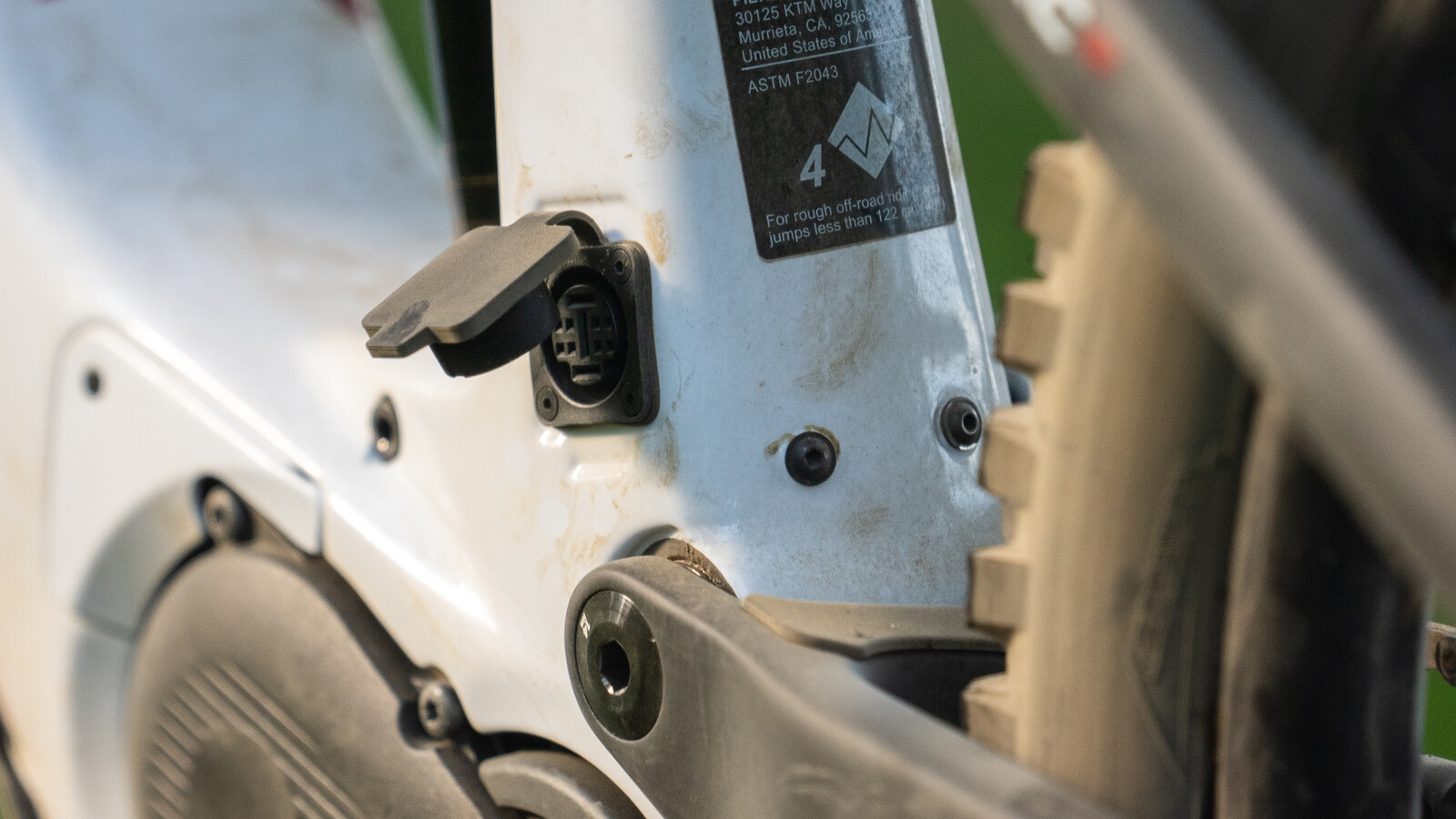
We touched on the bike’s range earlier and are always a little hesitant to go down this hole too much since there are so many variables that impact how far one goes on a charge. In general, when using the Range setting, riders can clock some very long days and go up a ton of hills before running out of power. The assistance level is also generous enough that riders are unlikely to fatigue mid-ride and need Rally to bail them out.
We love how quiet the Powertrain system is. No motor knocks or rattles on the downhills and only a slight, low-frequency whir on the climbs. As mentioned earlier, we tried the Auto Shift function but could not get along with it. On that topic, we’re on the fence about having the derailleur wired to the bike’s battery. On the plus side, the derailleur is always charged. On the other side, the bike has to be turned on in order to shift. We were surprised at how often that situation came up. Also, part of the beauty of AXS is the simplicity of being wireless. This removes that. There is no objective truth here, some like grape jam, others, strawberry.
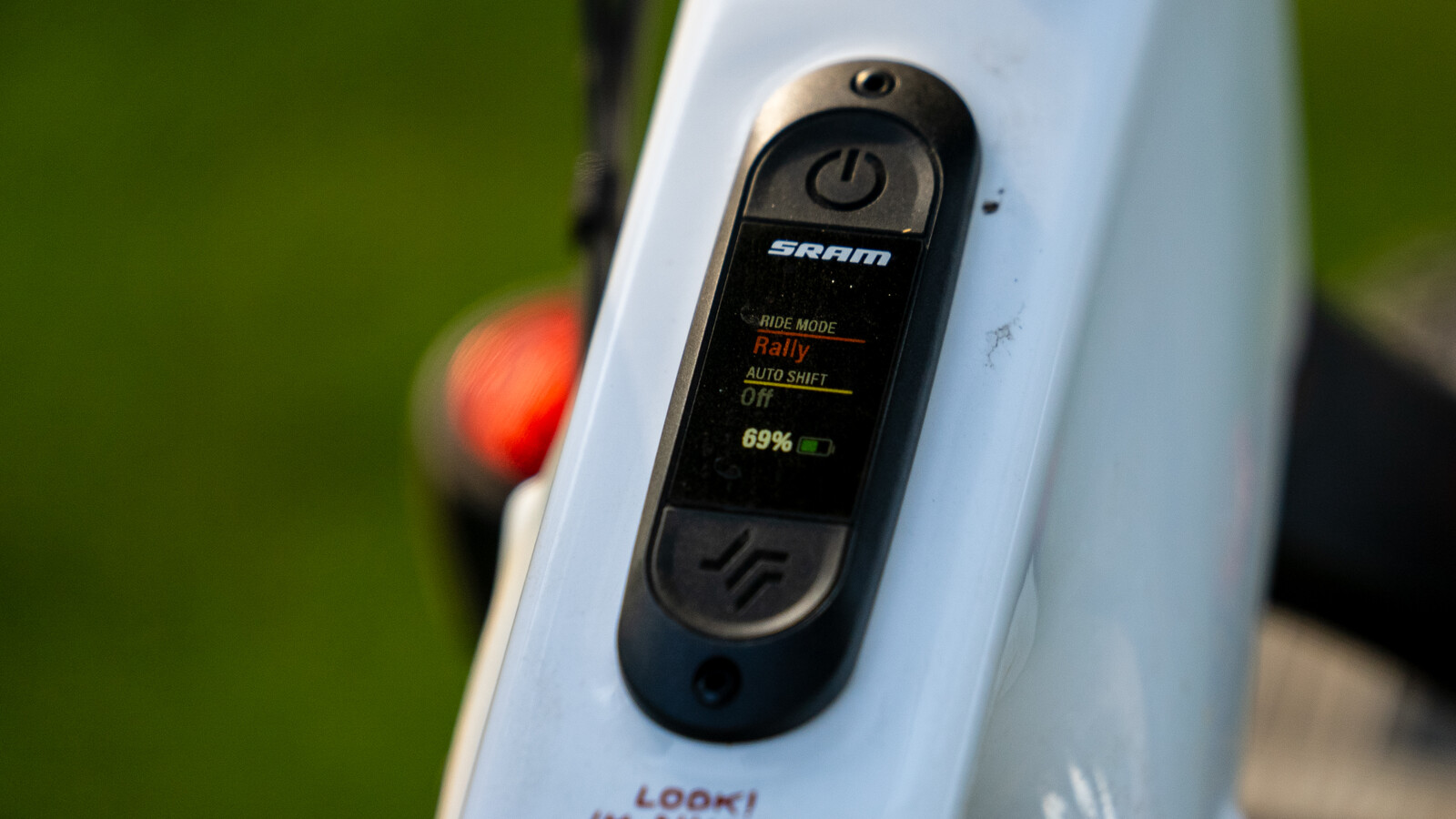
Build Kit
Our MXC 5 falls right in the middle of GasGas’s lineup. We loved having the chance to test the middle ground as it allows us to extrapolate whether a move up or down would be warranted. All things considered, the MXC 5 is probably where we would land if putting one of these bikes in the garage was the mission.
E-bikes are expensive. At first, we balked at the $8,999 price tag. Then we pulled comps and realized that GasGas is right in the mix with other non-DTC brands with this offering. The build kit is not perfect and there are some costly upgrades needed right away, but even when considering those elements, the MXC 5 is comparably priced for its parts selection.
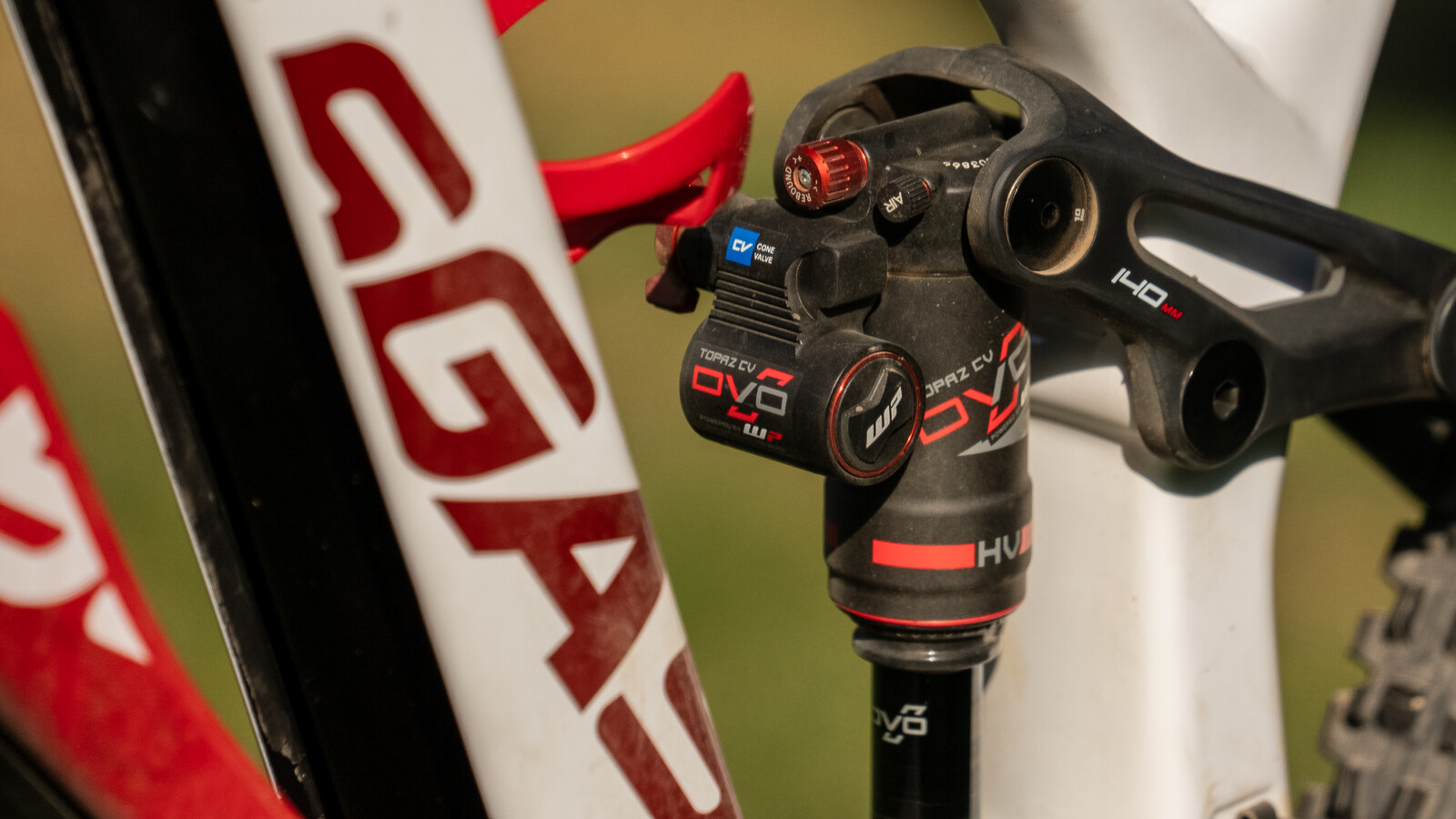
Fork / Shock Performance
Riding the DVO/WP suspension was a treat. It was intuitive to set up mostly because we had to do it that way, but it goes to show that even boutique suspension can be approachable. We were very happy with the robust chassis of the Onyx fork. Other than some squishy sounds, we found the suspension to be right in there with some of our favorite brands.
Tire Performance
GasGas did an almost perfect job with the tires. The Assegai DHRII combo is all-time and the MaxxGrip compound unquestionably contributed to the bike’s ace cornering. We just wish they had gone with DoubleDown over EXO+ casing. The MXC charges hard and asking EXO+ to keep flats at bay is a big ask. Our DHRII flatted on the first ride (tube) and then was slashed into the graveyard on our second ride. We replaced it with a spare Assegai and had no further trouble. That said, we know riders will want a burlier casing for at least the rear tire.
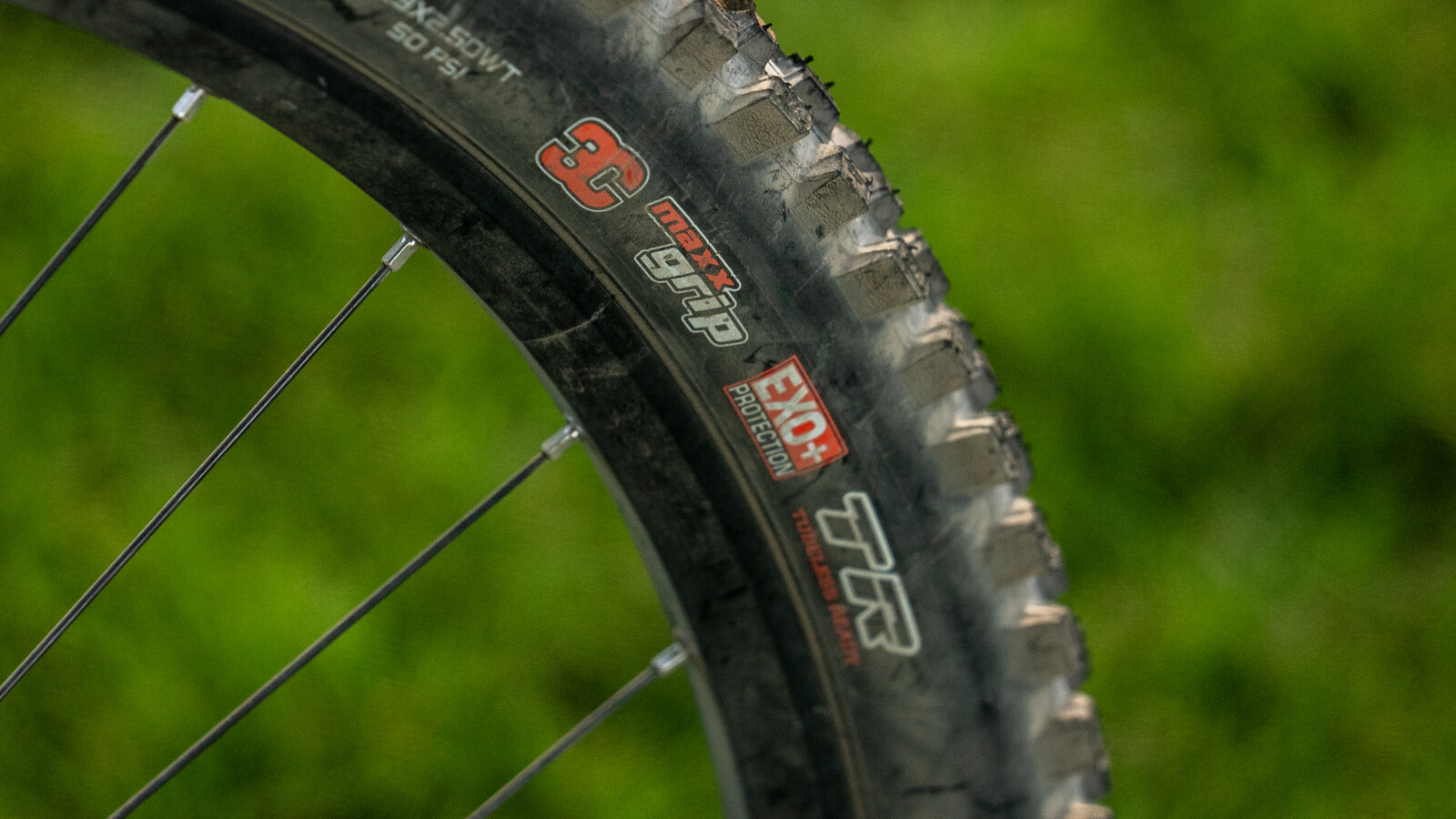
Wheel Performance
The "Mach 1 Trucky 30" wheels seem to be an OE-specific wheel. We had our doubts and those doubts began to surface toward the end of testing. As tubeless sealant began making its way out through the spoke nipples, we had to double-check these were supposed to be tubeless wheels. Evidently, they are. We would recommend replacing the rim tape upon the initial setup to avoid hassles down the line. For all intents and purposes, these wheels are not tubeless ready.
We did not experience any wheel failures but our rear wheel began loosening a fair bit. Nothing too dramatic but heavier riders may need to keep an eye on these things.
Brake Performance
Le sigh. What could have been? Our recommendation would be to strip off the G2 and replace them with any, more powerful brake system that you like. When doing back-to-back comparisons with other bikes, the lack of power here shone brighter than the sun. Other than the 125mm dropper, there could not have been a bigger “miss” on this bike’s build.
Things That Could Be Improved
GasGas is no stranger to e-bikes, so in some respect, they should know better. Some of the parts on the MXC line are home runs (MaxxGrip tires, suspension, drivetrain) but others are mystifying - low-end XC brakes, child-size dropper post, suspect wheels. If one can tune out the poorer parts choices, you can see a rip-roaring monster of a bike. On days when we aren’t so generous, the GasGas feels sketchy and limited.
Long Term Durability
When it came to the actual platform, the GasGas is a well-built machine. We did not have a single creak, moan, or loose part on this bike (besides the rear wheel). The overall finish of the bike is really nice and held up through testing. Other than fussing with the dropper post and rear wheel, we did not have a single issue and do not see any beyond what we experienced.
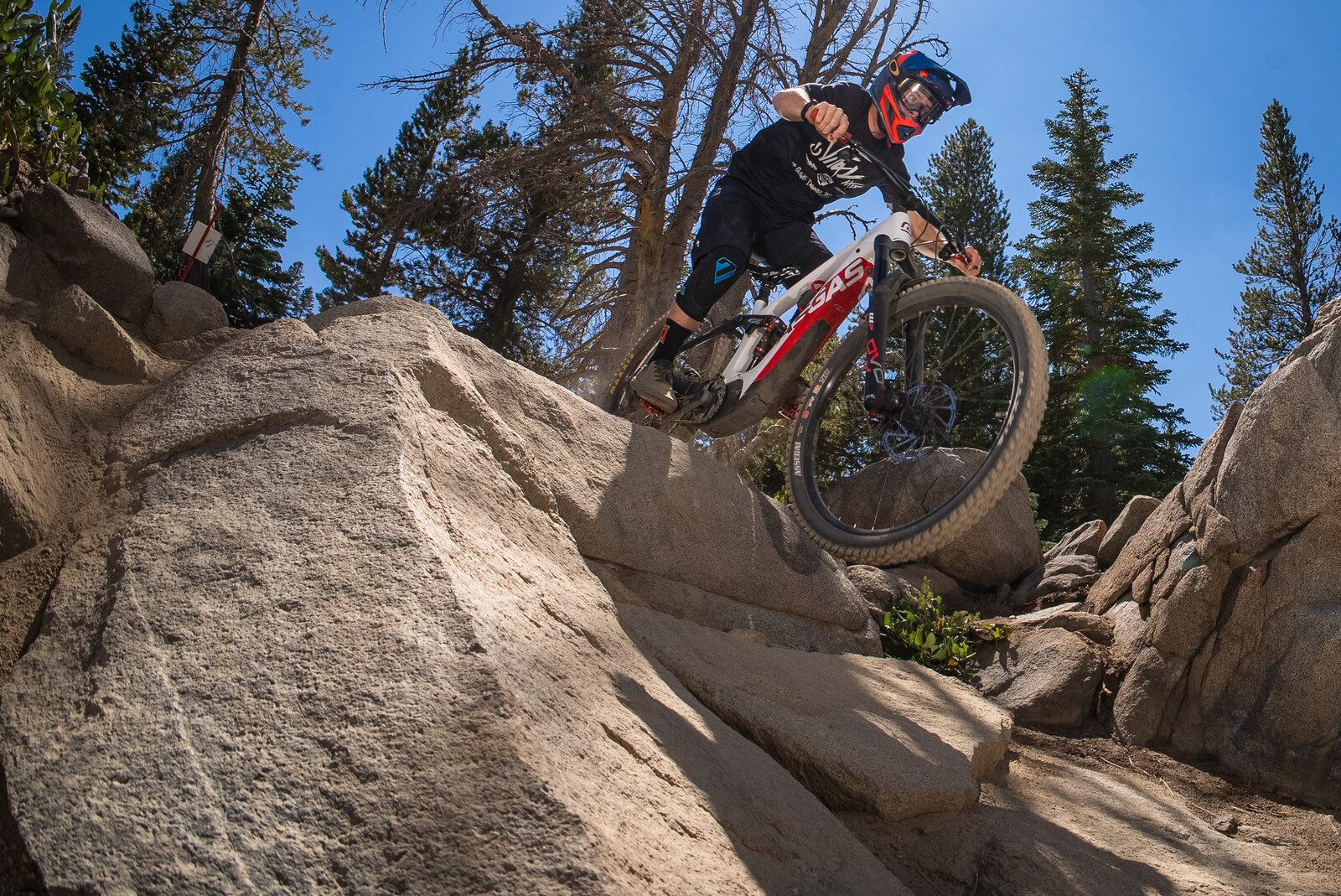
What's The Bottom Line?
The GasGas MXC 5 is a tale of two bikes. As a platform, GasGas hit this one out of the park. The MXC has killer geometry, is powered by a fantastic motor system, and is supported by great suspension. At the end of the day, those are the key elements. The fly in the ointment are some of the parts hanging off that platform. The good news is that GasGas, or people purchasing the bike, can fix those issues. All it takes is more money. Riders looking to grab something different and have a hell of a good time will have a friend in the GasGas.
For more information, please visit www.gasgas.com.
Vital MTB Rating
Overall Impression: 3 out of 5 stars
__________________________________________________________________________
About The Reviewer
Brad Howell - Age: 45 // Years Riding MTB: 30 // Height: 5’9” (1.7m) // Weight: 170-pounds (77kg)
Contributor, editor, brand manager, demo manager, shop mechanic, Rampage digger, trail builder, but mostly a mountain biker. Brad has allowed mountain bikes to ruin and run his life for the past three decades. Every time he thinks he gets out, they pull him back in. Here we go again.


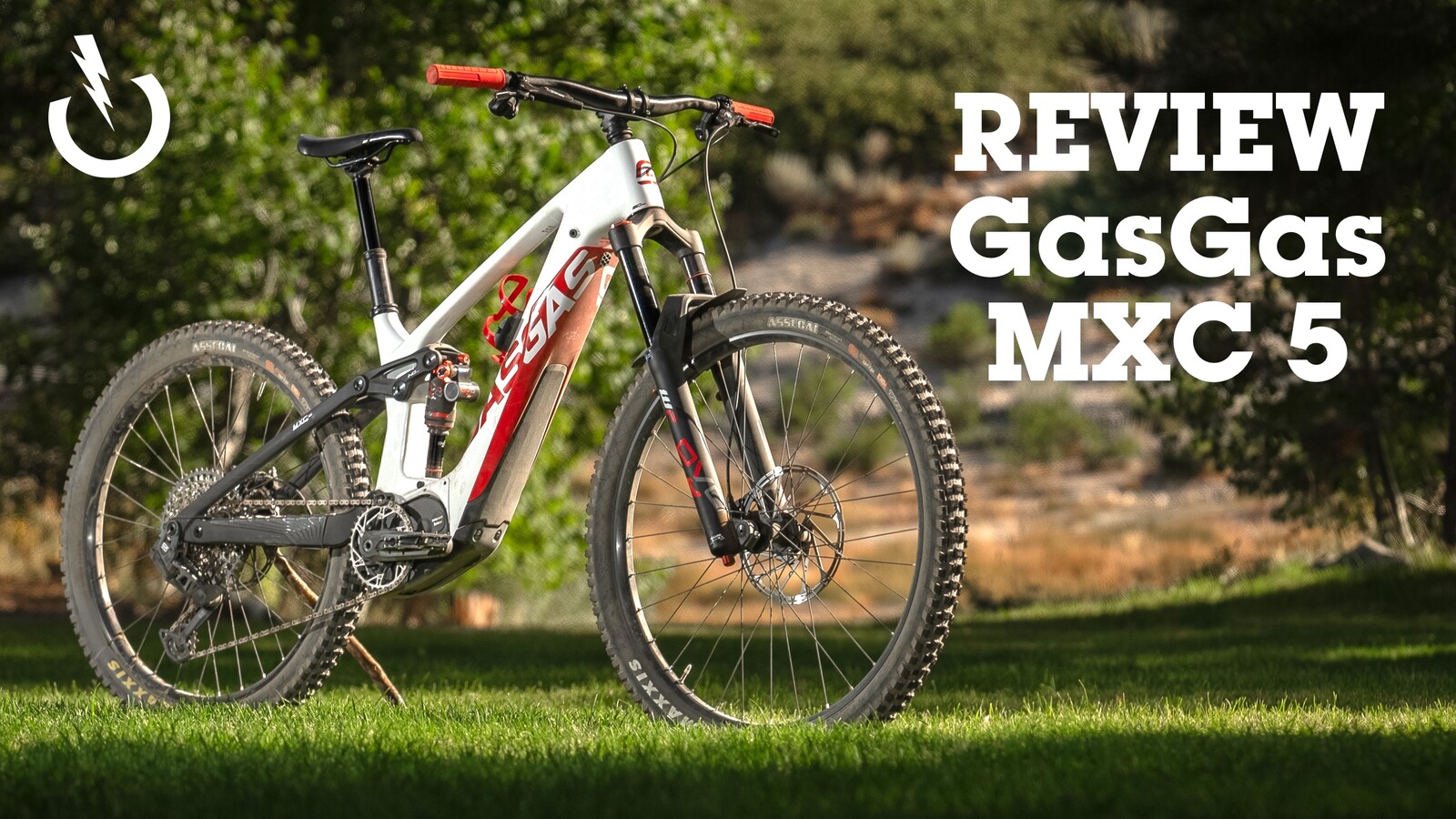
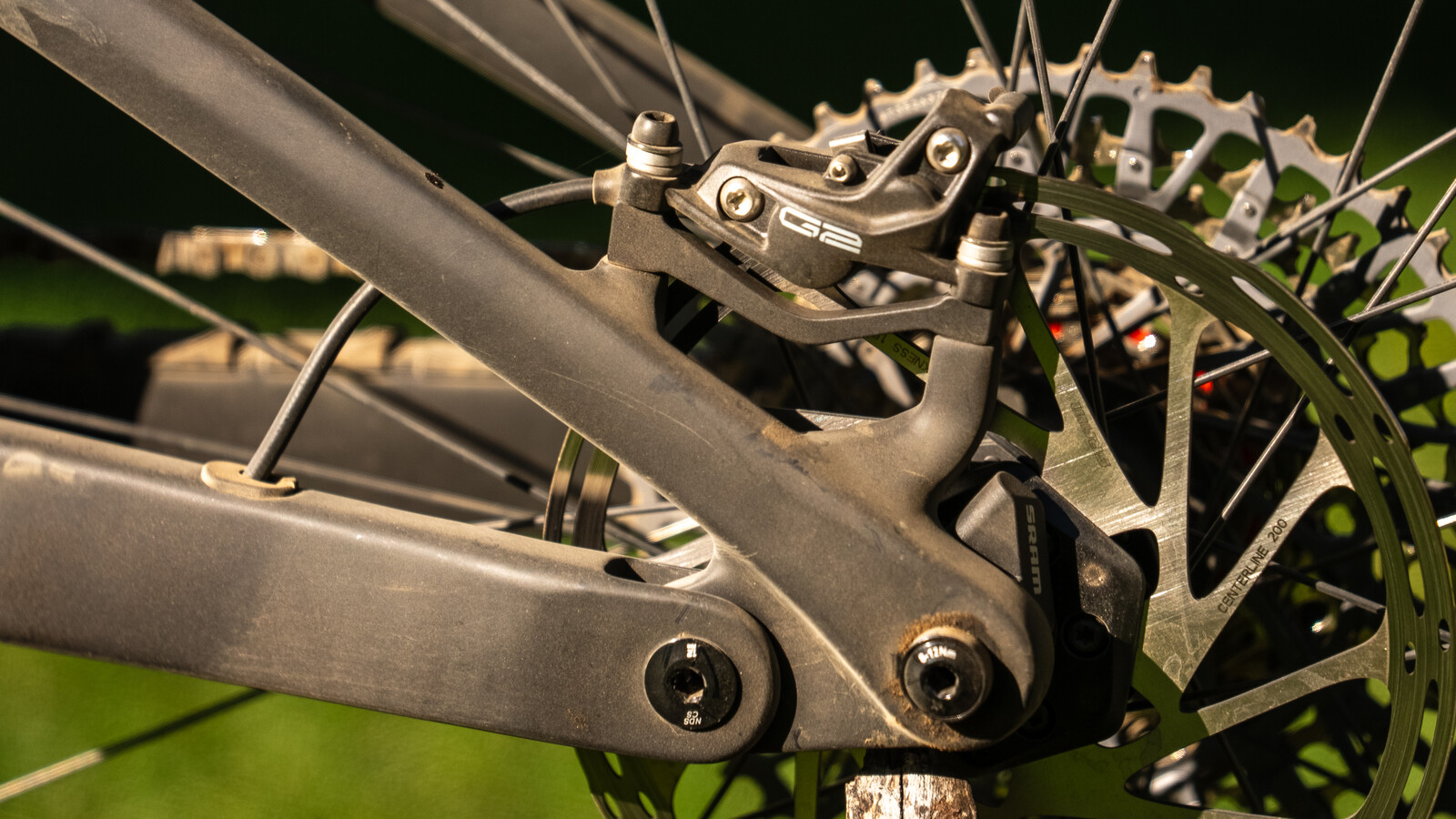





View replies to: REVIEW - GasGas MXC 5 e-MTB
Comments